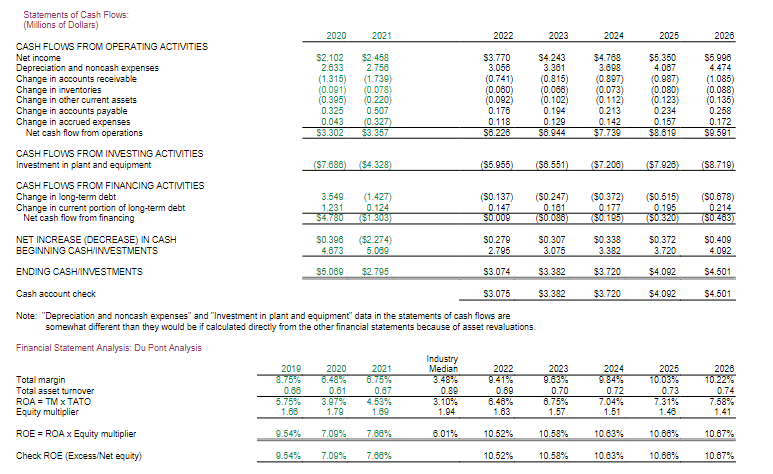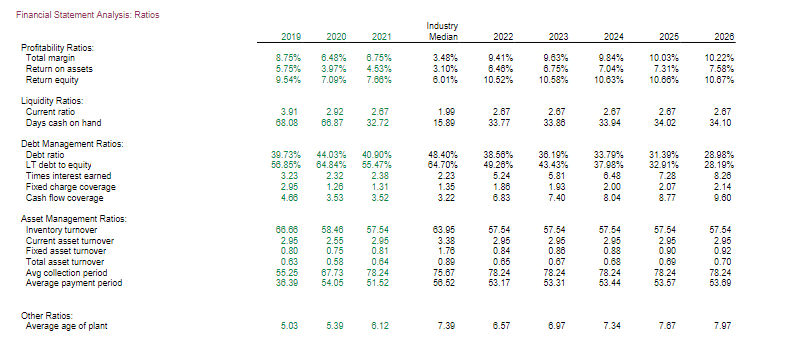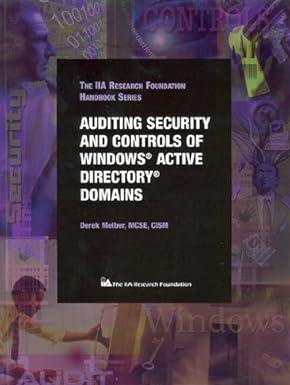Question
River Community Hospital is a 210-bed, not-for-profit, acute care hospital with a long-standing reputation for providing quality healthcare services to a growing service area. River
River Community Hospital is a 210-bed, not-for-profit, acute care hospital with a long-standing reputation for providing quality healthcare services to a growing service area. River competes with three other hospitals in its metropolitan statistical areatwo not-for-profits and one for-profit. It is the smallest of the four but has traditionally been ranked highest in patient satisfaction polls. For a complete description of the hospital, along with its 20192021 financial statements, see case 25 (River Community Hospital [A]). As the newly hired special assistant to the CEO, you have completed the financial and operating analyses (see case 25) assigned by your boss, Melissa Randolph. In fact, your presentation on these analyses to the board of trustees went so well that Melissa asked you to present Rivers preliminary five-year financial plan at the next board meeting. She provided the following guidelines to aid in the planning process:
1. Use your own best judgment to create Rivers financial plan, relying on your knowledge of the historical situation of the hospital, current trends in the healthcare industry, and the competitive environment facing hospitals today. Make any assumptions you believe to be necessary to create the plan, including assumptions about inpatient and outpatient volume growth, capacity constraints, reimbursement patterns, hospital staffing patterns, and input cost inflation. Completely document your assumptions in your report. You have limited specific information about River, so use your general knowledge about trends in the hospital industry to make the forecasts. The quality of your financial plan will be judged as much (or more) on the validity of your assumptions as on the mechanics of the forecasting process.
2. Place emphasis on the forecast for the first year (2022). In addition, create rough income statements, balance sheets, and statements of cash flows for the following four years (five years in total), including key financial ratios.
3. Keep in mind the five primary methods for forecasting income statement items and balance sheet accounts. These methods are (a) percentage of sales (in which a constant growth rate is applied), (b) simple linear regression, (c) curvilinear regression, (d) multiple regression, and (e) specific item forecasting. You may need to use several of these methods in your forecasts. (Hint: Do not forget that spreadsheets have a regression capability.)
4. Use the financial analysis data from case 25 (if that case is assigned) to help with your forecasts. Those areas where hospital performance has been poor should be improved, and your forecasts should reflect anticipated operational improvements where applicable.
5. Do not get so involved in the mechanics of the forecasting process that you forget to apply common sense to your forecasts. Think about what has happened in the past and what is likely to happen in the future regarding utilization, prices, costs, and asset requirements. If a forecast does not make sense, modify it until it does. For example, a blind application of statistical forecasting techniques might lead to a forecast containing five years of net operating losses. Regardless of statistical fit, such a forecast makes no sense because any hospital that expects to survive will have to take actions to change utilization, pricing, or cost trends to ensure positive operating results. Thus, the blindly forecasted values do not represent what is likely to happen in the future, even though they might be a perfect reflection of historical trends. Similarly, a forecast that is wildly optimistic probably needs to be modified because payers and competitors likely would react to dampen profitability if it rose dramatically
In closing, Melissa gave you her view of a good financial plan: First and foremost, the plan should consist of pro forma financial statements along with a table that summarizes the amount of financing generated internally and any external financing requirements. Second, key financial ratios should be calculated, and the hospitals expected future financial condition should be assessed, with special emphasis on changes from the hospitals current condition. Third, make sure that your forecasted financial statements are consistent with one another. The last special assistant could not figure out that two balance sheet accountsequity (fund) capital and accumulated depreciationare tied to income statement items, so he did not last very long. Finally, make all your assumptions clear, and be prepared to answer questions from the board concerning the impact of changes in your assumptions on the financial plan.





A. To begin, review the spreadsheet model paying particular attention to
(1) what assumptions are currently embedded in the model,
(2) how the financial forecasts are developed, and
(3) how financing feedbacks are handled. Briefly describe the model and its assumptions
B. Disregard the forecasting results supplied with the model. 1) Use your own assumptions to develop the hospital's forecasted financial statements. Besure to analyze your results from both accounting consistency and financial feasibility perspectives. b. Use the current industry comparative data given in case 1 to help assess the hospitals projected financial condition. Summarize your results in a table showing key financial ratios, retained earnings, external financing requirements (if required) for each year, and five-year totals for earnings and financing.
C. In general, what effect do a firm's profitability, capital intensity, and growth rate have on its external financing requirement?
D. Discuss what changes would have to be made to the forecast if the hospital were investor-owned?
E. Which of the notes to the financial statements given in case 24 could have a material effect on your forecast? Explain.
F. In your opinion, what are three key learning points from this case?
G. What is your recommendation and why?
Financial Statement Analysis: Ratios Note: "Depreciation and noncash expenses" and "Investment in plant and equipment" data in the statements of cash flows are somewhat different than they would be if calculated directly from the other financial statements because of asset revaluations. Financial Statement Analysis: Du Pont Analysis This case requires many assumptions about future events at the hospital. The sole basis for making these judgments are the historical data (and analyses conducted in Case 25 if applicable) plus knowledge of general trends in hospital industry. The model was constructed using the percentage of sales (constant growth rate) method of forecasting with a totally arbitrary 10 percent growth for all balance sheet accounts and ncome statement items that might be tied to volume. The 10 percent grovith rate multipliers are contained in Column I. To complete the case, students must make their own judgments about the best forecasting technique to apply to each line as well as the input assumptions needed for the technique selected. In essence, each line must be analyzed separately and modified as needed to create the best possible forecast. Note that the model extends out to Column S. Also, note that the student version of the model is the same as the instructor version. The model is circular, and hence may require multiple recalculations before the forecasted values stabilize. Note that the model is set up very simplistically, in that any external funds needed are automatically obtained by long-term debt financing. Furthermore, any surplus funds generated are automatically added to the cash and investments account. Any change to these assumptions requires revision of the model
Step by Step Solution
There are 3 Steps involved in it
Step: 1

Get Instant Access to Expert-Tailored Solutions
See step-by-step solutions with expert insights and AI powered tools for academic success
Step: 2

Step: 3

Ace Your Homework with AI
Get the answers you need in no time with our AI-driven, step-by-step assistance
Get Started


